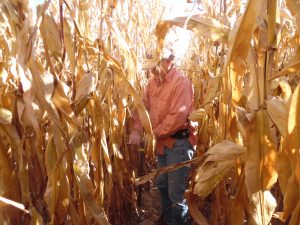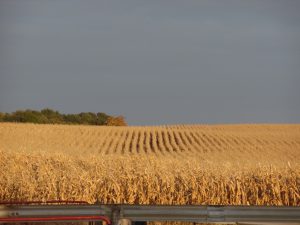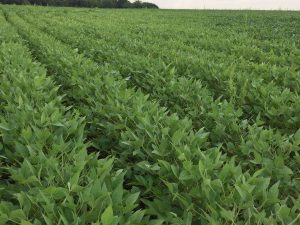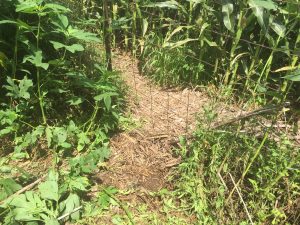Selected field sites and crop growth stages during the research project in Delaware County, Iowa initiated in 2014. The SARE project began in 2018.

Figure 1. Corn Emergence – May 2017

Figure 2. Corn at VT growth stage (tassling) 2019

Figure 3. Soil sampling in fall at corn maturity before harvest.

Figure 4. Mature Corn – North Field 2016

Figure 5. Soybean in North Field, 2018

Figure 6. Waterway established in fields found to reduce offsite movement of glyphosate and enhance degradation glyphosate as runoff moved through the grass vegetation.

Figure 7. Waterway inlet at fencerow bordering field receiving Roundup herbicide applied to GM corn; glyphosate in water at sediment crossing the fencerow contributed to nearly 120 ppb glyphosate + AMPA concentration in soils collected at this waterway site. Total glyphosate + AMPA content in soils at the waterway outlet ranged from 73 to 12.4 ppb during the three-year monitoring period (2017-2019) indicating active microbial degradation of glyphosate mediated within the waterway vegetation.

Figure 8. Drainage area at toe slope of southwest-facing slope in South Field on Osweiler Farm. Sampling site “3G” is located here for soils collected for analyses of all parameters including glyphosate+AMPA residues because cumulative runoff from the field pooled at this site. Total or Effective Glyphosate contents detected were 80, 68, and 45 ppb in 2017, 2018, and 2019, respectively. The site is an example of an unmanaged (not established with grass vegetation) waterway comprised primarily of weed escapes.
